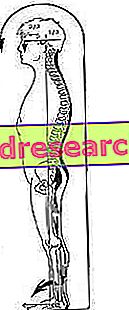Edited by Dr. Francesca Fanolla
It has always been considered the symbol of femininity, a touch of insightful and inimitable sensuality in every woman's clothing and, to be honest, an element of seduction for the male world ... The heel . But how much does wearing a heel cost in addition to the true sense of the word? More precisely, how much does it cost to us women health ? Much more than we imagine, when we admire the countless pairs of "high" and "very high" shoes in shop windows, perhaps choosing the boot or the décolleté with the latest-style wedge.
You may be wondering what the "heel" topic has to do with a Personal Trainer site ... yes, it is no coincidence that I turn to the interested parties, women precisely, with a hint of alert. In the gym I came across too many times in cases of girls and women of a more advanced age suffering from skeletal pathologies such as "hallux valgus", hyperextension of the knees and relative lumbar hyperlordosis, which - if not solved promptly - become, in fact, real dimorphisms borne of the musculoskeletal structures of the knees and of the final tract of the vertebral spine. No coincidence that these people were accustomed to the daily use of high heels, either for pure aesthetic pleasure, or for business needs. The question is therefore: what damages can actually cause the prolonged and disproportionate use of too high heels? And how?
To answer these questions it is necessary to make a brief parenthesis on the structure and on the functionality of the complex and important articulation of the foot.
The foot is considered the most important organ of control of the antigravity system (ie the tonic-postural system that allows the body to maintain balance in the various positions assumed in space, both dynamically and statically speaking); in simple terms it represents the base of support of the body. The foot acts both as an effector of the movement (following an order coming from the Central Nervous System), and as a 'receptor' of all the most varied stimuli coming from the environment in which it moves (the ground, for example) that are received by both skin exteroceptors and by muscle and tendon proprioceptors. This complexity of foreign-and-own-cectors gives the foot the important ability to adapt to changes in the body in space, allowing the continuous search for balance thanks to the correct position of the center of gravity (center of gravity of the body), located at the level of third lumbar vertebra (at the level of the navel, anteriorly). The sole of the foot is rich in mechanoreceptors (pressure sensitive esteroceptors) - which provide information on body oscillations - and receptors that are particularly sensitive to the traction of the skin on the foot itself, which provide information on the direction and speed of body movement. In short, they allow giving the body a position in the environment in which it is located. The sole of the foot, standing upright, represents the constant interface between the external environment and the postural system. In fact, the information of the breech receptors are the only ones to derive directly from a fixed reference which is the soil. Therefore the plantar reflex, linked to the cutaneous stimulations of the sole of the foot, is able to activate and modulate very complex reflexes with postural functions of considerable importance, both static and dynamic.

The breech pathology most frequently associated with the use of an excessive rise under the heel (high heel) is the hallux valgus, which appears as a deformation of the big toe that "deviates" externally, turning the phalanx towards the other fingers. This skeletal pathology (often very difficult to resolve if not surgically) is accompanied by other lesions, such as dislocation of the related lateral attached bones and of the first metatarsal head (covered by callosity for the continuous rubbing with the shoe). Everything gets worse, then, if it is a 'spiked' heel, that is the most harmful and difficult condition in which the foot can be placed, given that, due to the reduction in the width of the heel, the foot (consequently the whole propioceptive system) finds itself forced to operate different and difficult 'adjustments' (which over time become actual anatomical adaptations, consequently, pathologies) to avoid losing an already precarious balance due to the rise of the heel support base.
Second part "



